12 Ghost Towns Around the World Worth Exploring
Abandoned towns hold a certain mystery, offering a glimpse into the past where time seems to stand still. From desert mining settlements to forgotten villages left behind by disasters, these eerie locations are rich in history and intrigue. Exploring these sites not only provides a unique travel experience but also a chance to connect with the stories of those who once called these places home. Whether you’re drawn to the beauty of decay or the allure of untold stories, these destinations are perfect for those seeking adventure off the beaten path.
This post may contain affiliate links, which helps keep this content free. Please read our disclosure for more info.
Bodie, California, USA

Bodie, once a booming gold-mining town in the late 1800s, is now a fascinating ghost town nestled in the California wilderness. Established in 1859, the town saw rapid growth, reaching a population of more than 10,000 by the 1880s. The residents of Bodie lived in a rough-and-tumble environment, driven by the promises of gold and prosperity. However, as the gold began to dwindle, so did the town’s fortunes. By the 1940s, Bodie had been largely abandoned, leaving behind a haunting snapshot of a bygone era.
Today, Bodie is a state park, offering an exceptional look into life during California’s gold rush. The town has been preserved in a state of “arrested decay,” meaning that no new construction or restoration is allowed. This preservation method means visitors can walk through the original buildings, seeing old shops, homes, and even a church, all left as they were. The atmosphere in Bodie feels timeless, with the preserved artifacts and structures telling the story of an era that has long since passed.
Kolmanskop, Namibia
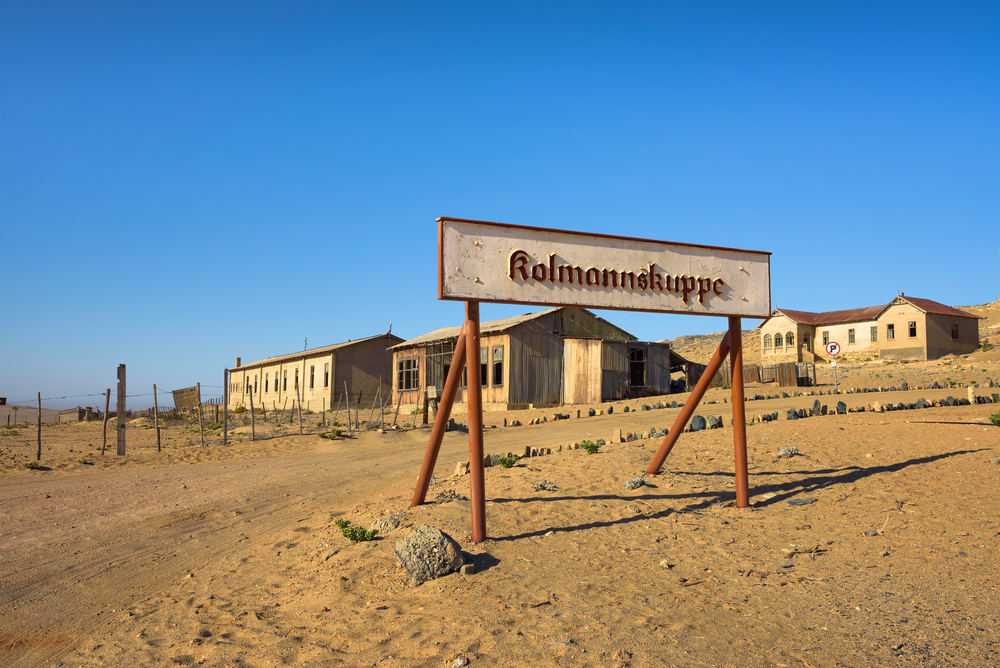
Kolmanskop, located in the Namib Desert of Namibia, is an abandoned diamond-mining town that offers a unique peek into the past. The town was established by German miners in the early 1900s when a rich vein of diamonds was discovered nearby. Over time, the town became a thriving community with a hospital, school, and luxury homes for the miners and their families. Kolmanskop’s boom years came to an end in the 1950s when diamond deposits began to dwindle and mining operations moved elsewhere. Today, the town stands as a ghostly reminder of its past, with its buildings slowly being overtaken by the desert sands.
Exploring Kolmanskop is like stepping back in time. Guided tours allow visitors to walk through rooms where time seems to have stood still. Ornate woodwork, colorful tiles, and vintage furnishings are still present inside many of the homes and public buildings, giving visitors a glimpse into the lifestyle of the miners. The surrounding desert landscape, with its towering dunes and harsh conditions, makes Kolmanskop even more striking. The contrast of the well-preserved interiors with the desolate environment outside makes it a must-visit for anyone interested in both history and the power of nature reclaiming human settlements.
Hashima Island (Gunkanjima), Japan
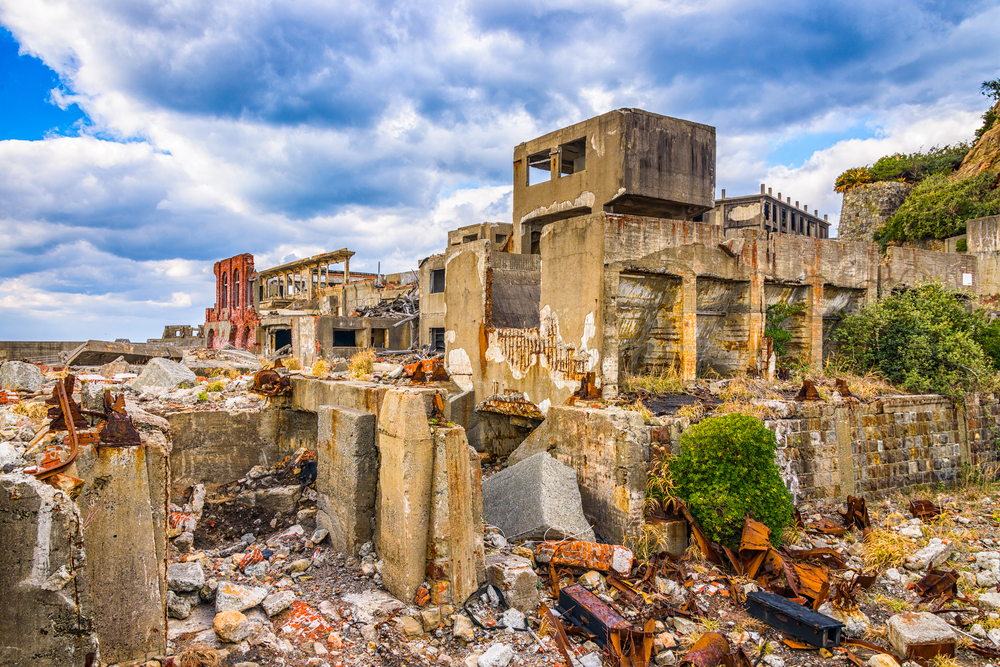
Hashima Island, also known as Gunkanjima or “Battleship Island” due to its resemblance to a warship, was once an industrial powerhouse during Japan’s coal-mining boom in the early 20th century. In the 1950s, it was one of the most densely populated places on Earth, with over 5,000 people living on this small island. The island’s rapid industrialization provided jobs to many, but as coal reserves began to deplete and the mining industry shifted focus, Hashima was abruptly abandoned in the 1970s. Since then, the island has remained uninhabited, its buildings left to decay and rust in isolation.
Today, Hashima Island is a UNESCO World Heritage site, attracting curious visitors eager to explore its eerie, decaying remains. The island’s abandoned high-rise apartment blocks and industrial buildings paint a vivid picture of the once-thriving coal-mining community. The atmosphere is somber, with the wind whistling through broken windows and the concrete structures slowly crumbling. Visitors can take guided tours that offer insight into the island’s mining history and the lives of the people who once called it home. Its haunting beauty and unique history make it a captivating destination for those interested in urban exploration and industrial heritage.
Pyramiden, Svalbard, Norway
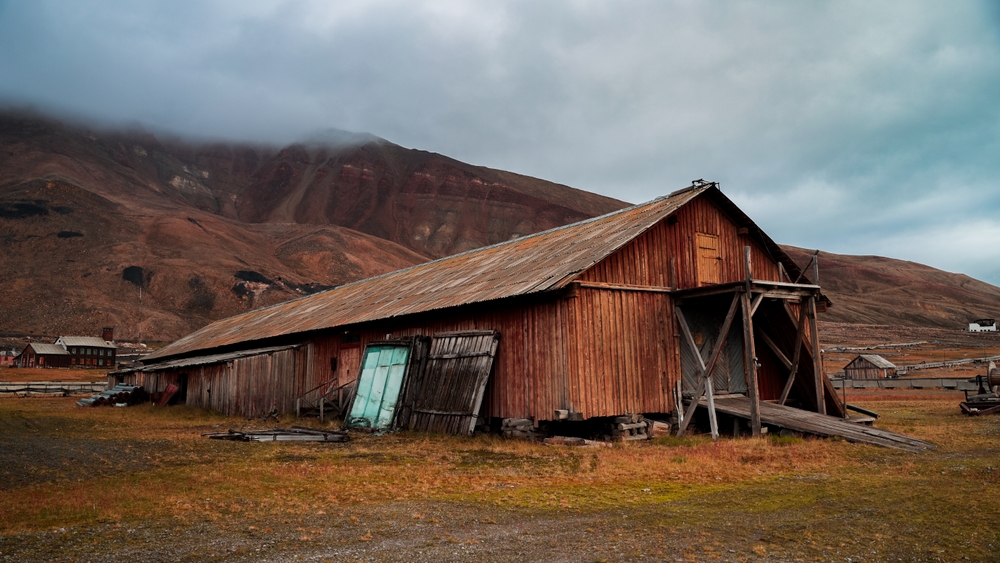
Pyramiden is an Arctic ghost town located in the Svalbard archipelago, north of Norway. Founded by the Soviet Union in 1910, it was originally a thriving coal-mining settlement, with a significant Russian and Ukrainian population. The town was fully operational until the early 1990s, when the Soviet Union withdrew from the area and mining ceased. With no one left to care for it, Pyramiden was abandoned, leaving behind a nearly perfectly preserved Soviet-era settlement, frozen in time. The ghost town is remarkable not only for its history but also for its isolation, making it one of the northernmost settlements in the world.
The abandoned buildings in Pyramiden stand stark against the Arctic backdrop, offering a rare glimpse into the past. The town’s well-preserved state is striking, with Soviet murals, sculptures, and equipment still visible in many of the public spaces. Visitors to Pyramiden can take guided tours through the abandoned hospital, school, and even the former hotel, which still contains old furniture and decorations. The town’s location, surrounded by glaciers and towering mountains, adds to its surreal and otherworldly feel. Pyramiden provides a fascinating insight into the Soviet Union’s presence in the Arctic and offers an incredible opportunity to explore a truly remote and unique ghost town.
Craco, Italy
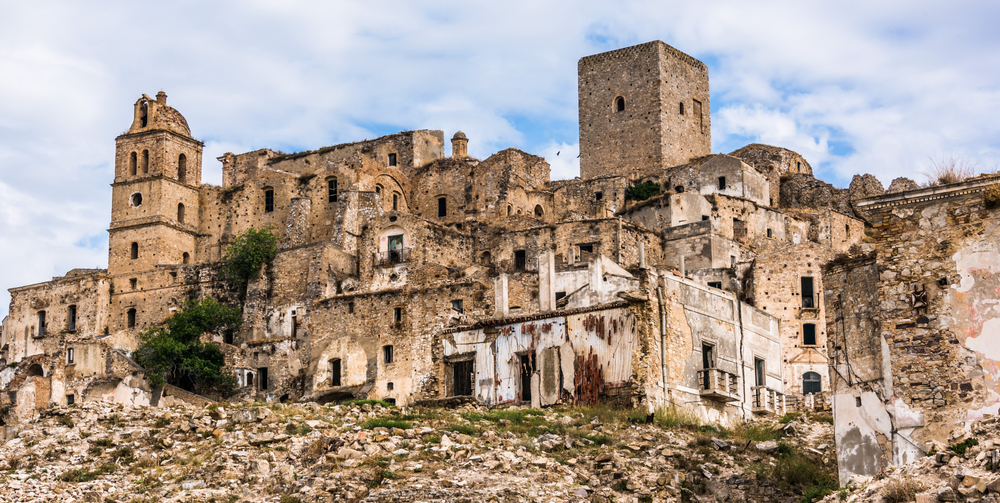
Craco, located in southern Italy, is a dramatic ghost town perched atop a hill with sweeping views of the surrounding landscape. Founded in the 8th century, Craco flourished for centuries, with its strategic position on a rocky hill making it an ideal settlement. However, the town’s downfall began in the 1960s when landslides and earthquakes severely damaged the buildings, forcing the majority of the residents to abandon their homes. Today, the crumbling remains of Craco are a striking testament to the resilience of its people, and the town stands as a popular destination for visitors interested in history and dramatic scenery.
Exploring Craco is like stepping into a forgotten world, with its narrow streets and towering stone buildings slowly being overtaken by nature. The town’s medieval architecture, including churches, palaces, and houses, still stands, despite years of neglect. The surrounding landscape, with its rocky cliffs and ravines, enhances the eerie and mysterious atmosphere of the ghost town. Craco has also been used as a backdrop in various films, adding to its cinematic allure. The haunting beauty of Craco, combined with its fascinating history, makes it a must-see for anyone interested in Italy’s lesser-known historical sites.
Pripyat, Ukraine
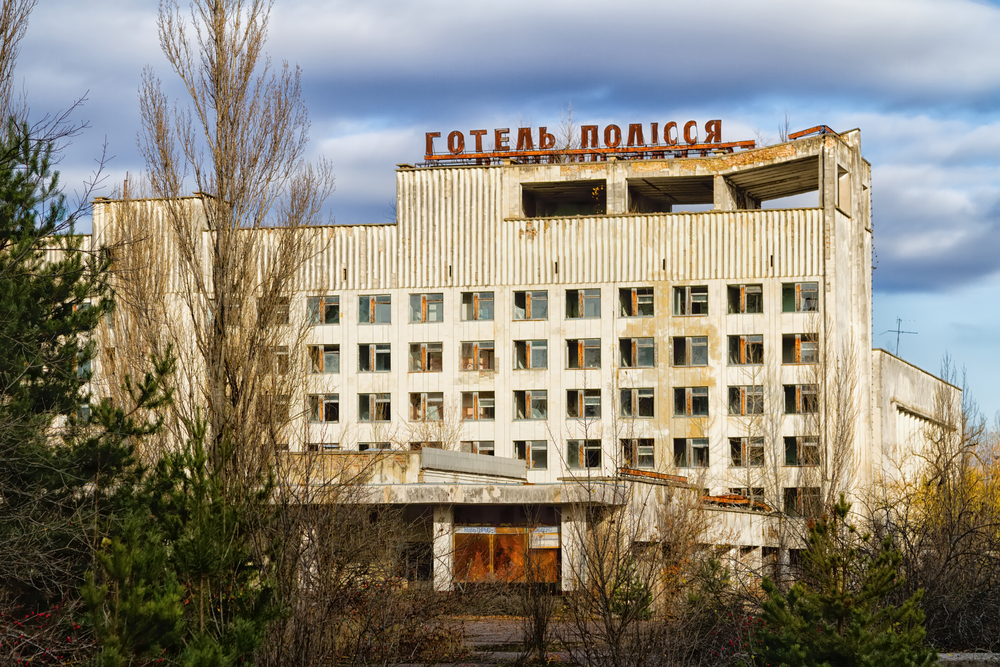
Pripyat is perhaps the most well-known ghost town in the world, owing to its connection to the Chernobyl nuclear disaster in 1986. Before the catastrophe, Pripyat was a thriving city built to house workers for the Chernobyl Nuclear Power Plant. With a population of nearly 50,000 people, the town had schools, hospitals, and a lively cultural scene. However, after the explosion at the Chernobyl plant, the town was evacuated within hours, and its residents never returned. Today, Pripyat remains abandoned, with radioactive contamination still present in the area.
Visiting Pripyat is like stepping into a post-apocalyptic world, with its decaying buildings, overgrown vegetation, and eerie silence. The town’s abandoned fairground, complete with a rusting Ferris wheel, adds to the haunting atmosphere. Many buildings, including schools, theaters, and apartment blocks, are still standing, though they are slowly falling apart. Despite the lingering radiation, Pripyat has become a popular destination for tourists, many of whom are drawn by the town’s dark history and the chilling reminder of the disaster that changed the world. The experience of visiting Pripyat is not only a journey through a ghost town but also a sobering reminder of the risks of nuclear power.
Oradour-sur-Glane, France
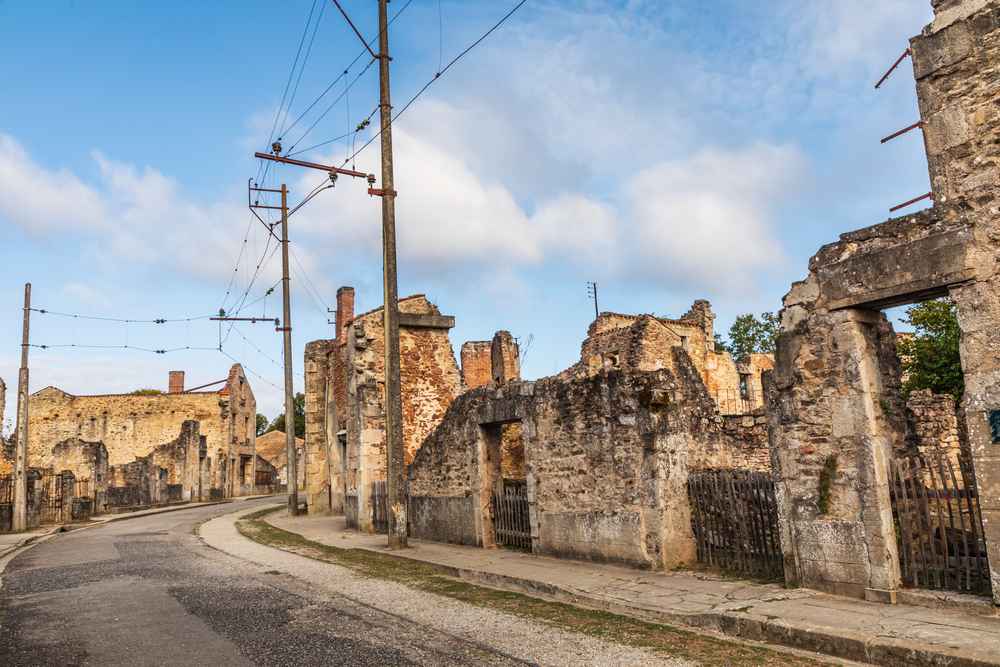
Oradour-sur-Glane is a ghost town in France that was preserved after being destroyed by the German Waffen-SS during World War II. On June 10, 1944, the village was attacked, and 642 of its residents were killed, most of them civilians. After the massacre, the village was left in ruins and never rebuilt, with the French government deciding to preserve it as a memorial to those who lost their lives. Today, the town serves as both a historical site and a solemn reminder of the horrors of war.
Walking through Oradour-sur-Glane feels like stepping into history. The town is frozen in time, with the burned-out husks of cars, shops, and homes still standing as they did in 1944. The village’s church, where many of the victims were executed, remains intact, as does the town’s railway station and its other structures. Visitors can reflect on the tragic events that unfolded here and explore the museum that details the massacre and its aftermath. The town is not only a site of remembrance but also a powerful symbol of the impact of war on innocent civilians.
Teufelsberg, Germany
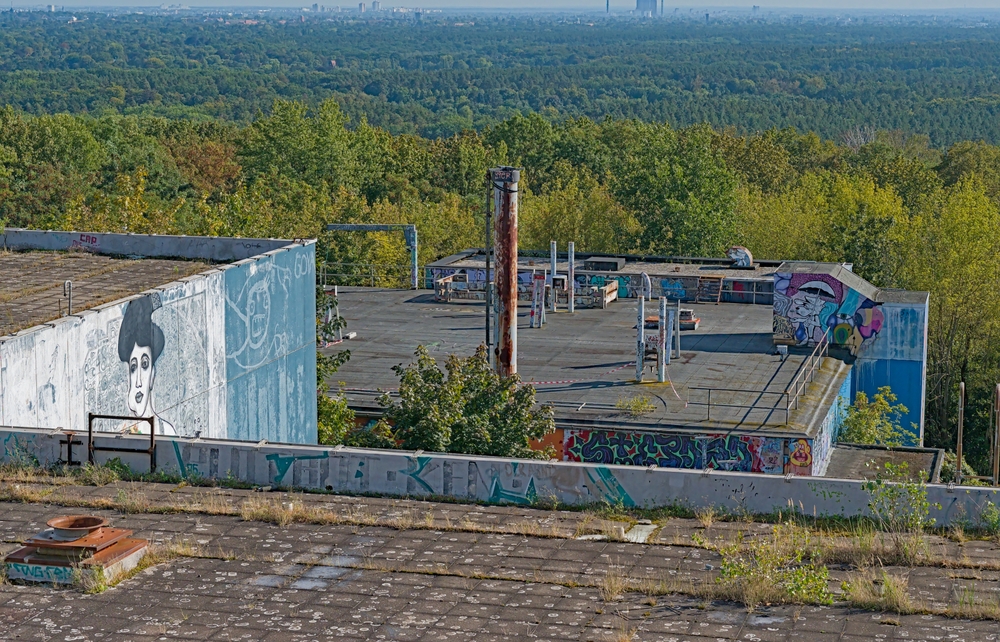
Teufelsberg, located near Berlin, is a former U.S. listening station built on a man-made hill constructed from rubble after World War II. The station was used during the Cold War to intercept communications from the Soviet Union and other Eastern Bloc countries. After the Cold War ended, the station was abandoned, leaving behind a massive complex of radar domes and buildings. Today, Teufelsberg is a popular destination for urban explorers and photographers, who are drawn to its eerie atmosphere and the stunning views it offers over Berlin.
The site’s unique history and stark, abandoned architecture make it one of the most interesting ghost towns in Europe. The massive radar domes, which were once used for spying, now stand as haunting relics of the Cold War era. Visitors can walk through the ruins, experiencing both the remnants of a top-secret military installation and the beauty of Berlin’s cityscape in the distance. Teufelsberg offers a rare look into the Cold War’s legacy, and its derelict buildings provide an incredibly atmospheric environment for exploration.
Capernaum, Israel
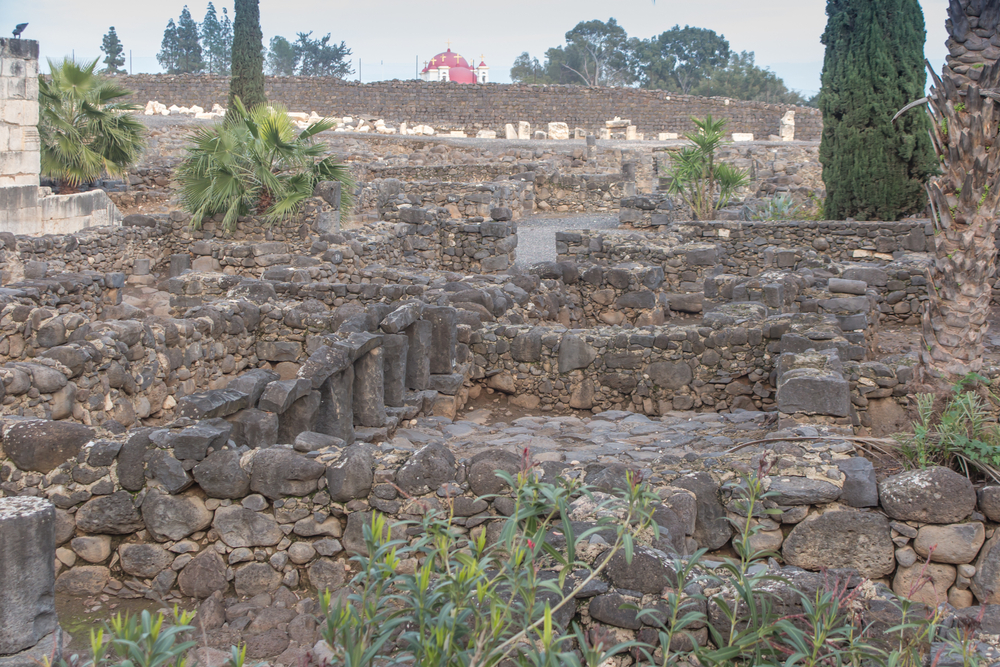
Capernaum, located on the shores of the Sea of Galilee, is an ancient fishing village that is now a significant archaeological site. Once home to a thriving community during the time of Jesus, Capernaum is mentioned multiple times in the Bible. Over time, the village was abandoned, and its ruins were rediscovered in the 19th century. Today, visitors can explore the remains of the synagogue, houses, and other structures that date back to the 1st century CE.
Capernaum’s historical and religious significance make it a unique ghost town. The well-preserved ruins provide a fascinating look into ancient life, with many of the original stone structures still standing. The site is also home to a modern church built over what is believed to be the house of Saint Peter. For visitors interested in both history and religion, Capernaum offers a powerful connection to the past, making it one of the most important ghost towns in the world.
Rhyolite, Nevada, USA
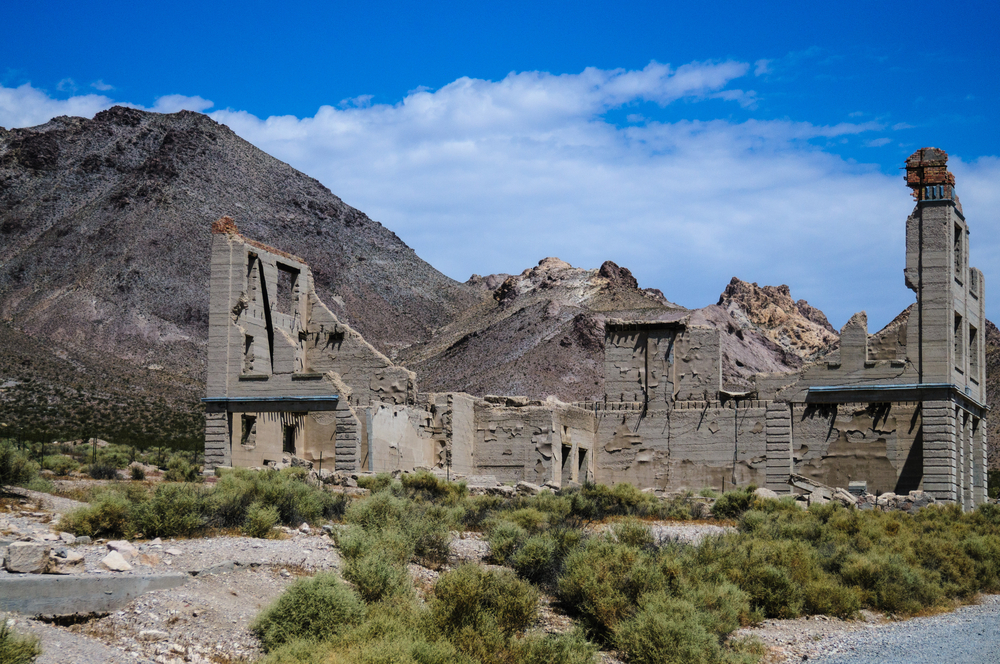
Rhyolite, located in Nevada, was a gold rush town that flourished in the early 1900s before being abandoned just a few short years later. At its peak, Rhyolite boasted a population of over 5,000 people, along with saloons, hotels, and even an opera house. However, when the gold mines failed and investors lost interest, the town quickly fell into decline. By the 1920s, Rhyolite was completely abandoned, and the remains of the town were left to be overtaken by the harsh desert environment.
Today, Rhyolite is a popular ghost town for visitors interested in the Old West and the gold rush era. The town’s remaining structures, including the foundation of its once-grand hotels and the famous “ghost” house made of glass bottles, offer a fascinating glimpse into a time of wealth and ambition. Rhyolite’s location in the Mojave Desert, with its stark, arid beauty, adds to the eerie atmosphere of the town. It stands as a powerful reminder of how fleeting the fortunes of a boomtown can be.
Al Madam, UAE
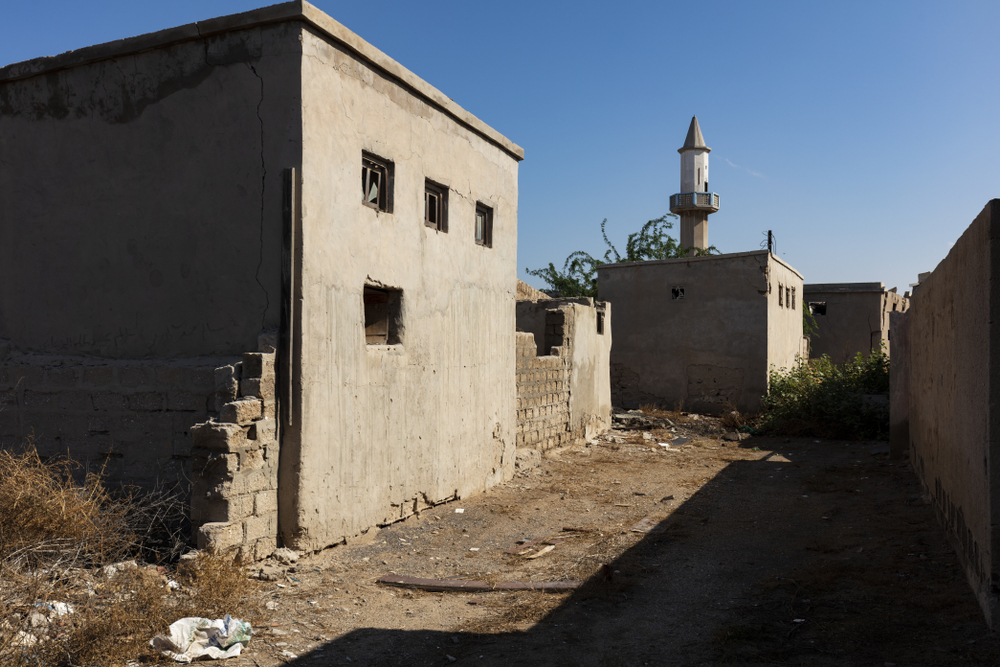
Al Madam is a desert ghost town located in the United Arab Emirates, known for its eerie beauty and hauntingly well-preserved structures. Once home to a small community, the town was abandoned for reasons unknown, though it’s speculated that water shortages and the harsh desert environment contributed to its downfall. Today, the town’s crumbling mudbrick houses, surrounded by shifting dunes, create a surreal atmosphere that attracts adventurers and photographers alike. Al Madam stands as a stark contrast between human settlement and the overpowering force of nature reclaiming its space.
What makes Al Madam so unique is its combination of isolation and preservation. The empty streets, with buildings overtaken by sand, provide an almost cinematic view into the past. Visitors can wander through the small homes and structures, often finding remnants of daily life left behind. The village’s eerie quietness and the vast desert surrounding it make it a fascinating place to explore, especially for those seeking a remote, tranquil escape with a touch of mystery.
Famagusta, Cyprus
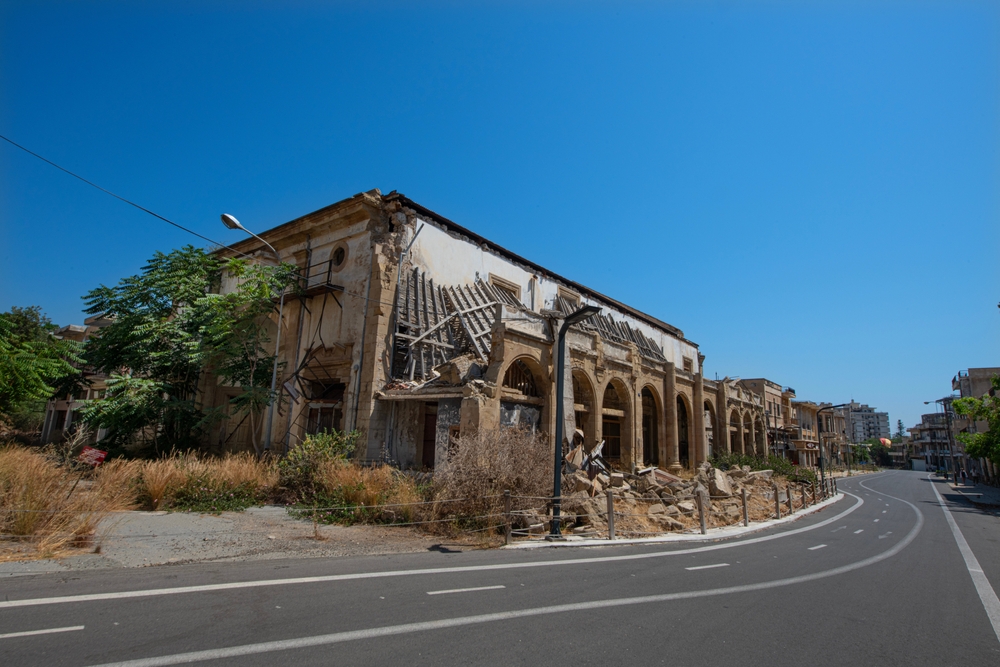
Famagusta is a ghost town located on the northeastern coast of Cyprus, and it has been abandoned since the Turkish invasion of 1974. The once-thriving city was a popular tourist destination and one of the richest places in the Mediterranean before it was abruptly deserted. The area, particularly the district of Varosha, remains under military control, and its once-glamorous hotels and resorts are now derelict, frozen in time. Visitors can get a glimpse of the city through the barbed wire fences, seeing buildings overrun by nature and vehicles left untouched for decades.
Famagusta’s status as a modern ghost town makes it intriguing for those interested in recent history and its complex political situation. The site evokes feelings of melancholy, as visitors can walk along the deserted beaches and peer through windows of hotels that once hosted celebrities and world leaders. While the town remains a symbol of Cyprus’ turbulent history, it also offers an opportunity to reflect on the passage of time and the impact of conflict on communities.
This article originally appeared on Avocadu.
